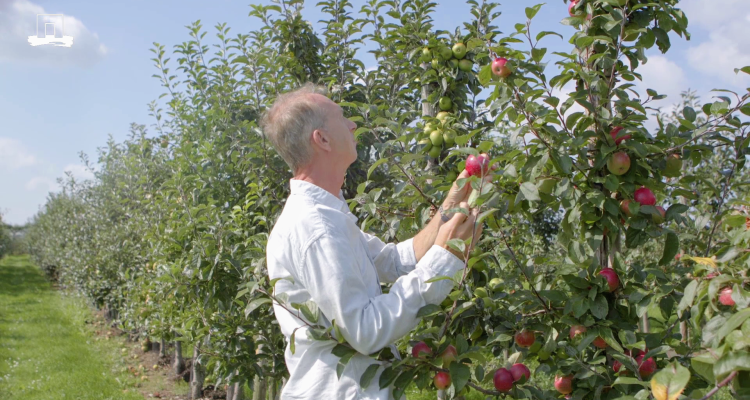
News
Video: CGN’s apple collection in the orchard
Apple season is in full swing! In this video we take a look at the orchard in Randwijk where the apple collection of the Centre for Genetic Resources, the Netherlands (CGN) is located. How do you maintain a field collection like this and why can’t you store apple varieties as seeds?
- Unfortunately, your cookie settings do not allow videos to be displayed. - check your settings
CGN's apple collection
CGN manages the Dutch genebank for plant genetic resources to contribute to the conservation of genetic diversity of horticultural and agricultural crops. The vast majority of crops are stored as seeds in the genebank's freezers, but apples are not: they are maintained as a field collection in an orchard. The apple (Malus domestica) collection consists of almost 200 varieties, mainly (heritage) varieties from the Netherlands. Many old varieties are acquired through the Nederlands Fruit Netwerk (Dutch Fruit Network, NFN), with which CGN collaborates to improve and expand the collection.
The history of the apple collection
Since 1976 a number of governmental institutes have been collecting a large number of apple varieties. These varieties were no longer used in commercial cultivation, but are valuable for research and breeding because of their wealth of genetic diversity. In 1998 a selection of these varieties was planted at the Randwijk experimental garden and the collection came under management of CGN. Since 2018 the collection has been transformed into a Dutch heritage collection where foreign varieties and research material have been gradually replaced by old Dutch varieties.
Maintenance, research and utilisation
The varieties in Randwijk are maintained according to modern insights. The health of the orchard is checked by the Netherlands Inspection Service for Horticulture (Naktuinbouw) on a yearly basis. Diseased trees are replaced. Thanks to the knowledge of pomologists of the NFN and (molecular) research, we can identify old varieties to conserve a large diversity of special Dutch apples in the collection and to make them available. The material is planted in new orchards of fruit societies and used for research and breeding. DNA analyses give us more insight into the different varieties and help us preserve the genetic diversity of apples.
Do you want to know more about CGN’s apple collection and apples in the Netherlands? Visit the page ‘CGN apple collection’, look up varieties in the Orange List (Dutch) and read about the Nederlands Fruit Netwerk (Dutch).